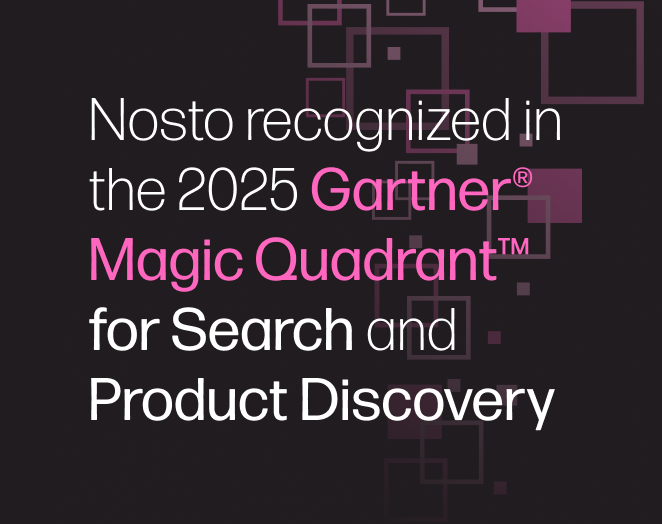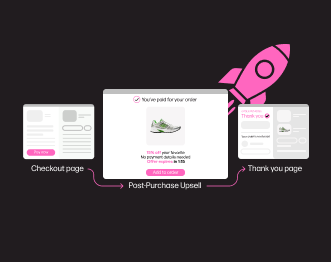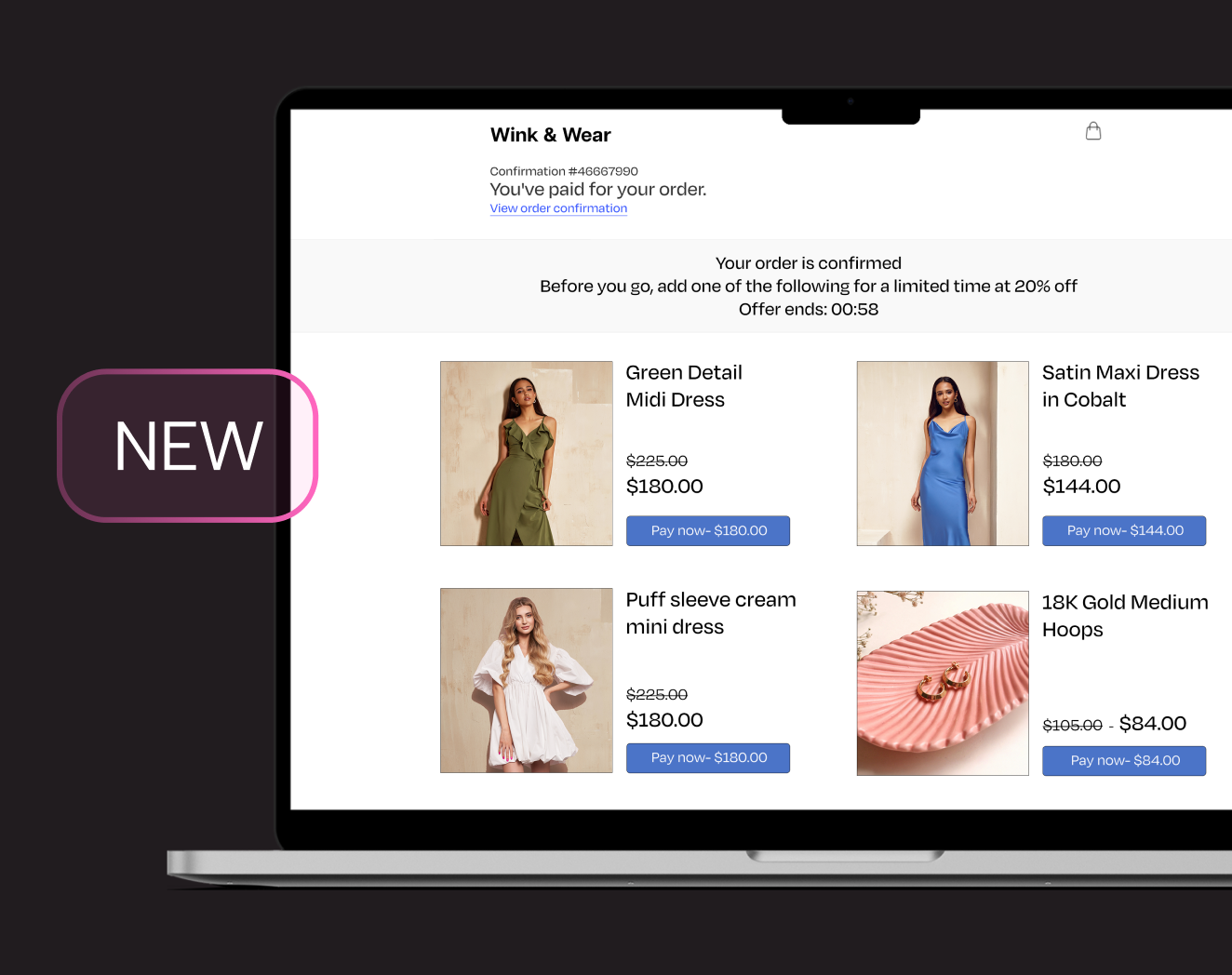Diversity in Digital Marketing: How Brands Can Be More Inclusive
Diversity in digital marketing today can look like many things. When you go out in public, most of the time there is a mix of people of different ages, sizes, genders, races, health conditions, religious and sexual preferences and more.
Just like in the real world, our marketing should be a reflection of the real people who are interacting with our businesses on a daily basis. Today’s consumers want to see people they relate to represented in the marketing and advertising campaigns of their favorite brands. And smart brands should strive to be as customer-centric as possible.
What does diversity in digital marketing mean?
Diversity in digital marketing doesn’t just lend itself to visuals. It requires intentional thinking and doing plenty of research—looking at your current team structure, understanding your core audience and assessing the accessibility of your user experience.
Diversity means evaluating factors such as:
- Age
- Appearance
- Ethnicity, race, nationality
- Gender & sexuality
- Health & disabilities
- Language
- Religious affiliation
- Socioeconomic status
- Veteran status;
- and more
Diversity in digital marketing doesn’t necessarily mean trying to cater to every single possible demographic. Rather, it means knowing who is drawn to your brand and making sure those groups are represented and included in marketing efforts. It’s all about the intent and motivation behind a campaign.
Why diversity and inclusion matters (stats)
Shutterstock ran a study in 2018 about how culture and people are represented in visuals. They found that 88 percent of Generation X and 90 percent of Millennials believe a diverse representation in a brand campaign can improve that brand’s reputation. The report also concluded that there’s a lot of room for growth as far as brands using imagery that reflects the diversity of people in society in their campaigns.
Audiences not only like seeing themselves represented, but also seeing more than one type of person shown in marketing content. In 2019, Google and The Female Quotient conducted a survey which revealed that 64 percent of all respondents took action after seeing an ad considered to be diverse or inclusive; 69 percent of Black consumers were more likely to purchase from a brand whose advertising positively reflects their race/ethnicity; and 71 percent of LGBTQ consumers were more likely to interact with an ad that authentically represents their sexual orientation.
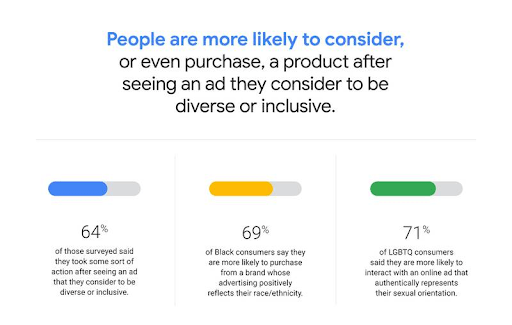
Why authenticity is key to building a diverse and inclusive brand
Diverse representation is important, but how you represent diverse groups, orientations and viewpoints is even more crucial.
We’ve all seen websites, ads and emails that attempt to demonstrate diversity with stereotypical stock photography that seemingly checks the right boxes. As long as it shows a mixture of genders, races, ethnicities and ages—all perfectly posed together with smiles on their faces—it’s good to go, right? Wrong.

These types of staged images do not resonate with real people—particularly today’s digitally savvy consumers who easily see right through these forced attempts at inclusion. In fact, a Stackla study found that 70 percent of people can tell the difference between a brand or stock-created image and a real customer-created image.
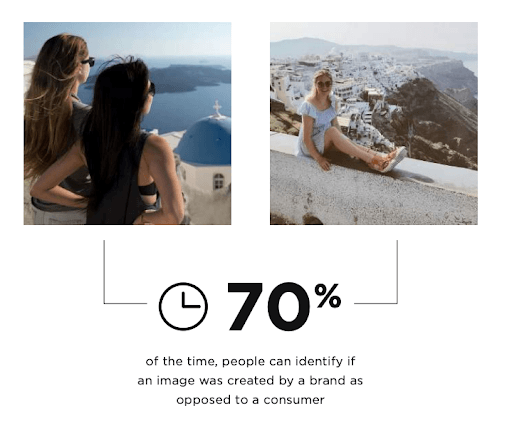
Another Stackla study found that 90 percent of consumers say authenticity is important when deciding which brands they like and support.
It’s not enough to vaguely signal diversity and inclusion. It’s authentic representations of different ages, abilities, backgrounds, ethnicities and orientations that people seek and genuinely resonate with.
Diversity and inclusion in digital marketing matters not just because it makes audiences feel seen and heard. It shows a more truthful picture of society, and it also improves the businesses of those companies striving for better representation.
The benefits of inclusion and diversity
There are numerous benefits to inclusion and diversity in marketing campaigns.
You reach more people
Ensuring you display diversity and include different demographics in your marketing campaigns helps your brand reach more types of people. This increases your potential customer pool.
You get closer to your audience
These days it’s all about those engagement numbers and fostering a community within your brand. By conducting market research and communicating directly with customers, you can form a deeper relationship with your audience and build better brand trust and loyalty.
Grows respect and brand recognition
People will respect a brand that offers diverse and inclusive marketing and genuinely reflects their audience. When you as a marketer understand and speak the language of your customer, you earn their trust and even their respect.
Boosts your bottom line
Reaching a wider audience + having brand respect + understanding your customer = a better bottom line. People are more likely to want to purchase from a brand when they see diversity in their campaigns.
Examples of diversity and inclusion in branding
Here are some real-life examples of how big brands have made their marketing and advertising campaigns appeal to wider audiences:
1. Dove’s Real Beauty Pledge
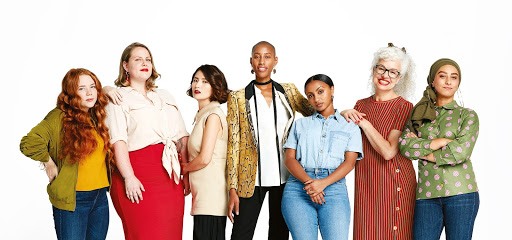
Launched in 2004, Dove’s Real Beauty Pledge aims to appreciate women of all ages, sizes, races and more. Their goals include always featuring real women, never models, portraying women as they are in real life and helping build body confidence and self-esteem in young girls.
2. Ad Council’s #LoveHasNoLabels Campaign
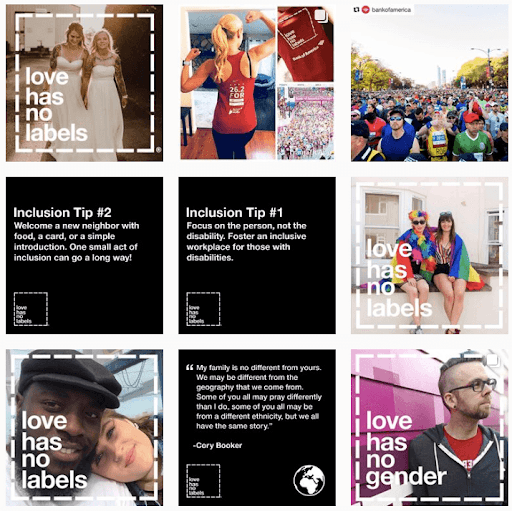
The Ad Council’s Emmy award-winning Love Has No Labels campaign used real people’s stories and visual user-generated content (UGC) to promote acceptance and inclusion of all people across sex, gender, race, religion, ability and age.
“We saw how people were connecting to the campaign and saw themselves reflected in the real people featured in the video. They were organically sharing pictures of themselves and their diverse partners and friends with #LoveHasNoLabels. [Stackla] made it a breeze to gather and hone in on all the great content being shared across a bunch of platforms.”
– Carolina Treviño, Digital Product Manager at the Ad Council
3. Google Pixel’s ‘Question Your Lens’ Ad
Not every picture tells the whole story. If you’re in emotional distress, reach out: https://t.co/P5q9mFbDJP pic.twitter.com/Ok7yXJ4vB6
— Made By Google (@madebygoogle) January 26, 2018
In its ad for the Pixel 2 phone, Google spotlighted mental health by saying “not every picture tells the whole story.” It featured real people in its ad who have called a suicide prevention hotline.
4. Lush’s Movement, together for BLM initiative
Lush Cosmetics showed support for the Black Lives Matter (BLM) movement by creating its Movement, together for Black lives initiative as a way to “support meaningful and lasting change in areas of inclusion, diversity and equity in our communities.”
How to create a more diverse & inclusive content marketing strategy
Now that we’ve covered what it means to have a diverse and inclusive marketing strategy, let’s get into the specifics of how to have more diversity in your digital marketing:
Know your audience
If you’re not going to accurately represent your customers and fans of your brand then there isn’t much point to creating digital content. Connection is what it’s all about, and it’s easier to connect with people when you understand who you’re marketing to.
Research your audience and look into things like age range, gender, income level, location and more. Send team members out in the field to events to talk with people, call up your customers to get to know them better and conduct focus groups.
Make data a focal point
A good method to understanding your target market better is to research and collect as much data on them as possible. Use those insights to draw out important information about the people coming to your brand and also the key markets you want to speak to.
The more data informed your digital marketing strategy can be, the better you will be at coming up with a campaign that’s inclusive to your target audiences.
Look at your own team
Does your internal team reflect your audience? Think about who your audience is and what qualities from those people may be missing in your own team. If you’re thinking of hiring a new marketing person or content creator, take into account people who will add a fresh perspective to the marketing efforts behind the brand.
Ask your current team what ideas they may have for being more inclusive. Something you can also do is include new voices to your brand in the form of contributors, creators or freelancers who represent a perspective you currently don’t have.
Add more criteria for inclusion
Instate rules and style guides that writers and editors must adhere to for better inclusion. In 2019, the Associated Press Style Book added new sections on race and how to reference people based on their racial identity. There’s also the National Center on Disability and Journalism which “provides support and guidance” to help content creators see things from a disability angle.
Another thing brands can do is note to make content for more than just the “primary” holidays i.e. Chinese New Year, Juneteenth, Heritage Months, Diwali, Eid Mubarak etc.
Use real content from real people
Visual content is one of the best ways to implement more diversity in your digital marketing strategy. Having your audience see other people like themselves feels validating and is much more relatable than content generated in a studio or with stuffy stock images.
One of the best ways to do this is through user-generated content. With UGC, being more inclusive suddenly becomes a lot easier because you can take images from real customers and advocates and make those a core part of your content marketing campaigns. It’s also a much more cost-efficient and quick way to generate fresh new content for your brand.
It’s an ongoing practice
Diversity and inclusivity is an ever-changing landscape. Staying relevant and making your content inclusive will always be a work-in-progress. It’s a practice your marketing team must work to grow and improve over time.
Make sure to update your data, monitor any changes in customer personas and behavior, and regularly conduct research on updates in diversity and inclusivity.
Conclusion
Customers will identify with companies when they can see people like themselves reflected in the marketing of the brand. These days, it simply isn’t enough for brands to say they support inclusion and diversity. They must show it too and UGC is a great way to start; by displaying real images from real customers.

